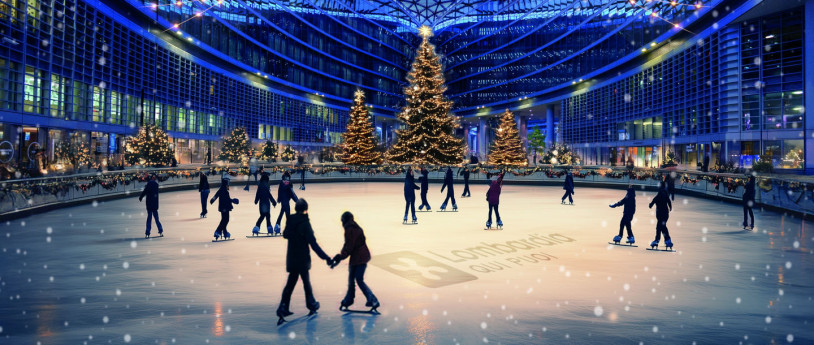- Itinerari
On a motorcycle a stone's throw from Milan
Did you wake up late? Do you still want to go out for a motorcycle ride? Great, today we are going to do a tour that starting from Milan will take us to discover the beauties of the Naviglio Grande and Bereguardo, for a total distance of about 80/90 km.
Our tour starts from Milan's Darsena; this is basin located inside Milan near Porta Ticinese, in connection with the Naviglio Pavese and the Naviglio Grande, which has been used throughout the centuries for mooring, storage and loading/unloading of the characteristic barges that sailed the Milanese Navigli. For this reason it was the most important junction for commercial river traffic in the Lombard city, and even one of the most important by tonnage at the Italian level.
This area of Milan is famous for the presence of numerous bars and pubs offering reasonably priced aperitifs, but there is also no shortage of restaurants, craft breweries and street food outlets, which every Friday, Saturday and Sunday are literally taken by storm by young people and families interested in the "movida" on the Navigli.
After a short tour (on foot) of the Darsena, which has been completely renovated in recent years, we finally set off on our tour of the Naviglio Grande by taking Via Ludovico il Moro. Passing Corsico we reach Gaggiano, a village interesting both for its rural environment and historical monuments such as the Visconteo Castle, as well as for the low historical buildings reflected in the water and still period atmospheres between cobblestones and ancient walls. Fantastic are the two agricultural villages of San Vito di Fagnano and Barate.
We continue heading now toward Abbiategrasso. At this point the advice is to take a small detour on the Naviglio di Bereguardo to visit Morimondo and its Abbey, one of the most beautiful and important places of worship in the Lombardy plain. The Abbey was founded in 1134, and even today it is one of the finest examples of Cistercian architecture combining Romanesque and Gothic styles. After the visit to the Abbey, very pleasant walk in the surroundings.
We retrace our steps toward Abbiategrasso and now head toward Cassinetta di Lugagnano. Just as the Venetian patricians vacationed on the Brenta, so the noble Milanese families spent their summers in the cool along the Naviglio, in the 18th-century villas that make up the great heritage of Cassinetta di Lugagnano, a place out of time, nestled along the Naviglio Grande just 25 km from Milan.
The noble families of the Trivulzio, the Visconti, the Mantegazza, the Castiglioni: these are just a few of the illustrious lineages that periodically frequented these places, even to oversee the management of the agricultural funds they owned.
Still riding up the Naviglio Grande until we reach Robecco sul Naviglio. Starting in the 16th century, Robecco experienced a real period of splendor, coinciding with the fact that some of the most prominent Milanese noble families chose this and other adjoining areas to buy land where they could build their country residences, investing considerable sums in vast estates and very profitable latifundia.
Villa Gaia in Robecco, so named in the second half of the 15th century because of the festivities held there, is one of the oldest buildings on the Navigli, and indeed is among the earliest with Villa features in Lombardy and among the richest in historical memories.
Part of the construction is even earlier, however, as evidenced by traces of arched windows found under plaster, but it was Count Vitaliano Borromeo who made it so majestic.
We continue up the Naviglio Grande until we pass Pontevecchio di Magenta and arrive in Boffalora Sopra Ticino, which lives around its 17th-century bridge, the landing stage for tourist navigations along the oldest of Milan's canals, the dwellings, cafes and taverns near the banks and finally the pedestrian-cycle paths that lead into the heart of the Ticino Park.
Ahead to Bernate Ticino, a village first mentioned as a "castrum" in late Roman times, around the year 1000 it was a fief of the Crivelli family. When in 1186 a member of the lineage became pope with the name of Urban III, he initiated the establishment of the splendid Augustinian Rectory, of which we admire the loggia that opens like a parlor toward the Naviglio Grande.
Our tour today finally concludes in Castelletto di Cuggiono, a picturesque hamlet in the municipality of Cuggiono characterized by the oldest stone bridge over the Naviglio Grande and the scenic staircase of Villa Clerici, home of the family of the same name, once used as a landing stage for noblemen. The location has also lent itself for the setting of several films including Ermanno Olmi's "L'albero degli zoccoli."
Today's tour is not very long, especially for those coming directly from Milan. However, it passes through the most typical and preserved areas of the Milanese countryside, where we can find authentic inns and typical taverns, those where we can easily find tables at which scopa, briscola or tresette are still played. Typical cuisine is represented by hors d'oeuvres of cured meats, fine risottos, game, frogs and snails, perhaps the most typical dish, to be eaten if possible in lively company.
Also for today our motorcycle tour ends here, it is time to return home by taking the MI-TO highway at Boffalora Sopra Ticino to return home.
Mostra cosa c'è nelle vicinanze:
